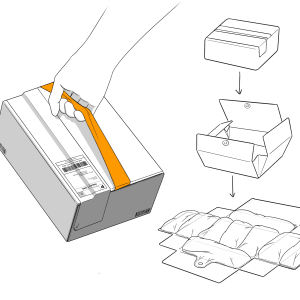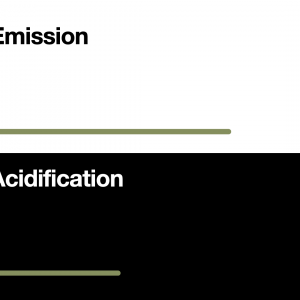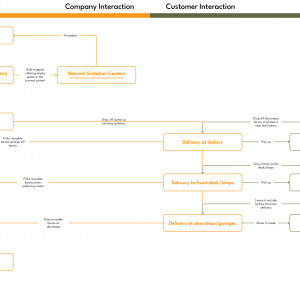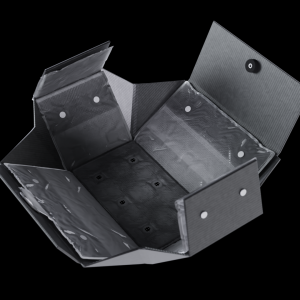Product Name: System Design with Reusable Packaging
Topic/Problem:
It’s understood that we as humans are polluting the world. We have to take action to fight this. One of the significant contributors to pollution is the trash that we are producing. Right now, there is not a comprehensive solution for this waste. Only 19 percent of the solid waste produced in 2016 was recycled or composted. The rest was either incinerated, put in landfills, or just openly dumped on the ground (What a waste 2.0, 2017). These methods pose major threats to the environment. Burning alone contributes to 5 percent of the global carbon dioxide emission (Trash burning worldwide, 2014).
So why don’t we enforce recycling and force all the developed countries to process their waste? Recycling is not as easy as it sounds. One of the most important factors is cost. In 2016, the World Bank calculated that the price exceeded $100 to process one ton of solid waste in developed countries. At this rate, to process all 2.01 billion tons of trash produced by the world in 2016 (What a waste 2.0, 2017) would cost more than 200 billion dollars. To put it in perspective, we have to sell everything Jeff Bezos owns (Ponciano, 2020) just to process one year’s worth of trash. So why spend more money cleaning it up when we can help reduce the amount we are producing? To combat this, I chose to focus on reducing the number of solid wastes produced.
Out of the solid waste produced in 2018, 28%, 74,589,000 tons were packaging and containers (Containers and Packaging, 2019) . Fortunately, over half was recycled in 2018. However, the percentage of corrugated cardboard recycling is going down with the rise of e-commerce. Companies like Amazon growing in the retail market means more box stores are closing. Unlike Amazon, box stores recycle up to 90% of their cardboard waste. In the case of plastic containers, over 69% were dumped into landfills in 2018. They can’t be recycled due to the nature of the material and contamination.
Since recycling is so hard to accomplish, how might we reduce packaging waste during the delivery process?
Package Folding Process
Solution:
Thinking back to the 70’s when milk was delivered to your door, and you can enjoy having milk without worrying about the packaging. Taking inspiration from the milk bottle recycling process, I’m proposing a package delivery system that the utilize existing infrastructures.
Design Touch points:
The main component of my design is a reusable delivery box with a inflatable inner layer. (video 1). During my research three things that the customer carried the most is package not get stolen, privacy of their information, and the unboxing experience. The design accomplished most of that while cutting down the carbon footprint. As shown in the video this box can POP open to revival it’s content for a more joyful unboxing experience, and the same fold can be collapsed much earlier then traditional cardboard boxes. Privacy is also important to the customers, so the package is design to remove all identification after opening. (image 1) Once the tape is removed, this package riveted back to any generic packaging, and all text on the tape will be smudged by the achieve. In terms all it’s carbon footprint, I have found that it is much less harming to produce plastic packing them cardboard (image 2). For the end-life consideration since the box is made form bio plastic PBAT and PLA, they can biodegrade in nature with in 10 years.
The other component of my design is the package eco system. Having the package by at people’s door step of at centralized location for pickup allows for a hassle free experience for both the delivery person and consumers. This would work with the existing infrastructures because right now in cities, delivery persons have to pick up the tote bags/ containers they used for delivery from apartment buildings and front desks. A more detailed circular system is shown in image 3. For further package reduction, the users can opt in to a package pooling system, in which multiple customers’ orders will be shipped in one package, separated by the delivery person or door man, and sorted into individual lockers/mailboxes. This way the user won’t see a any redundant packaging at all. Combining the system and the reusable package, I am looking to dramatically reduce the environment foot print of delivery packages.
I do understand I am work on an wicked problem and it requires a lot more design and police to made a difference. However, I am utilizing my skill set to propose one more possibility and hoping one day it will be adopted to get use one step closer for a circular economy.
List of References:
What a waste 2.0. Trends in Solid Waste Management. (2017). Retrieved October 16, 2021, fromhttps://datatopics.worldbank.org/what-a-waste/trends_in_solid_waste_
ScienceDaily. (2014, August 26). Trash burning worldwide significantly worsens air pollution. ScienceDaily. Retrieved October 16, 2021, from https://www.sciencedaily.com/releases/2014/08/140826121056.htm
Ponciano, J. (2020, August 27). Jeff Bezos becomes the first person ever worth $200 billion. Forbes. Retrieved October 16, 2021, from https://www.forbes.com/sites/jonathanponciano/2020/08/26/worlds-richest-billionaire-jeff-bezos-first-200-billion/?sh=43c394bb4db7.
Environmental Protection Agency. (2019). Containers and Packaging: Product-Specific Data. EPA. Retrieved October 17, 2021, from https://www.epa.gov/facts-and-figures-about-materials-waste-and-recycling/containers-and-packaging-product-specific-data#C&POverview.






